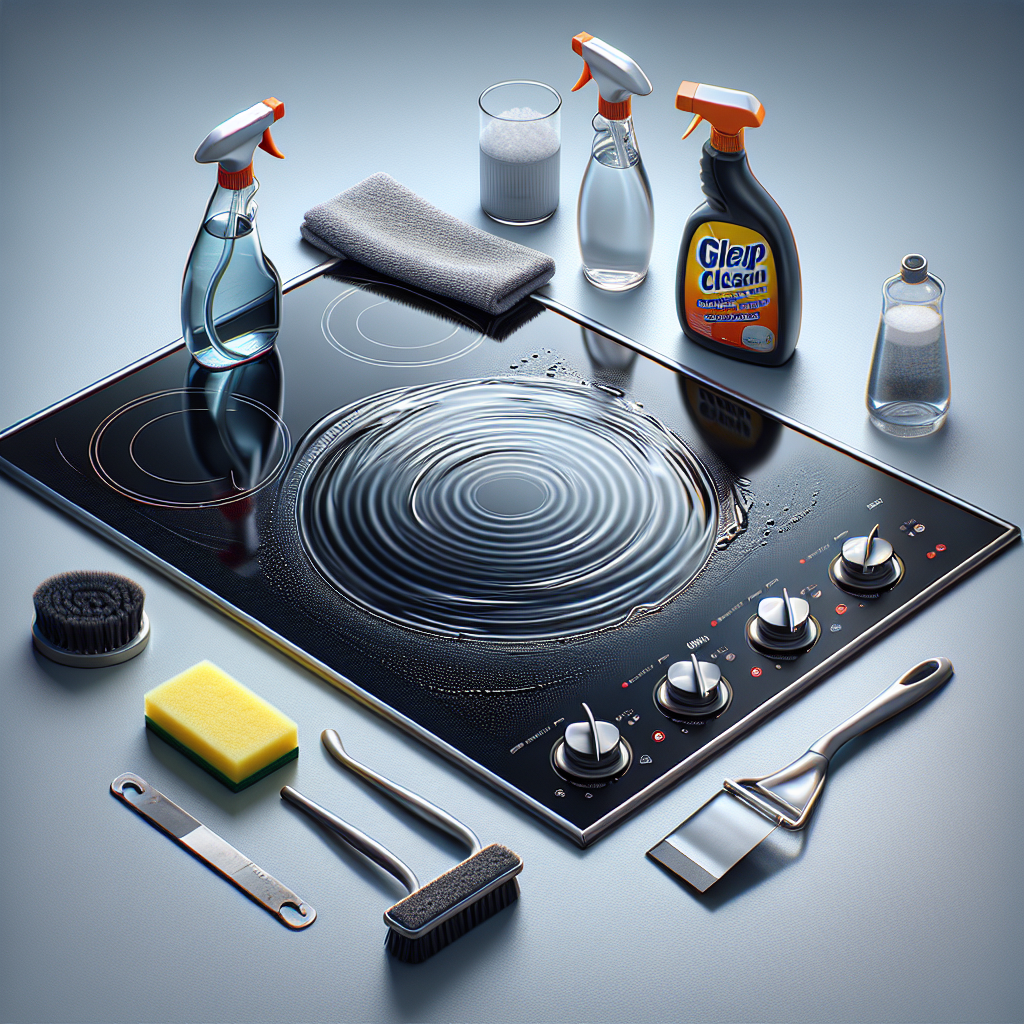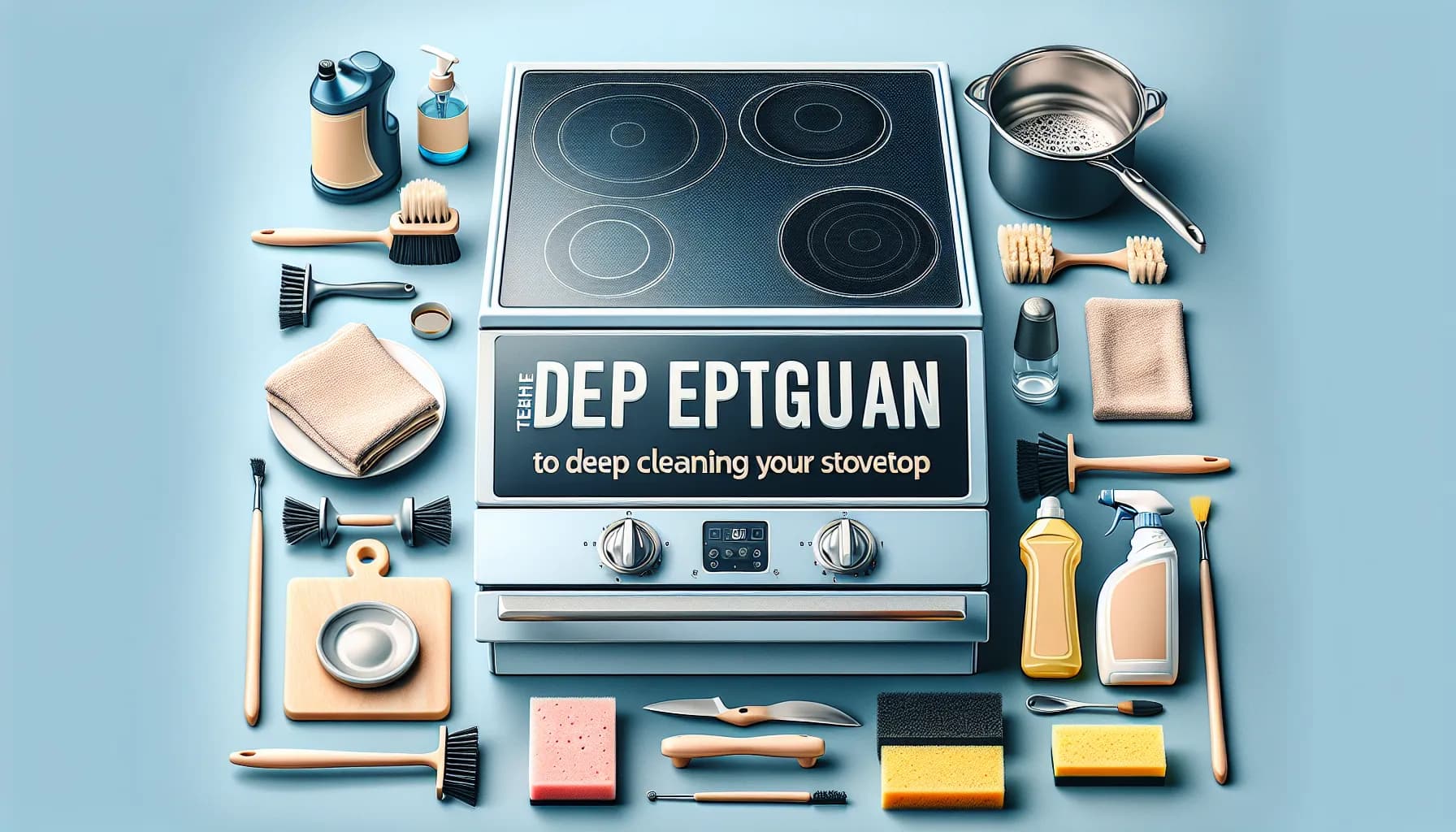The necessity of regular deep cleaning of stovetops is often overlooked. However, it’s vital for both health reasons and cooking efficiency. Over time, food particles, grease, and other residues accumulate on the stovetop, forming stubborn stains and burnt-on deposits. These not only look unsightly but can also breed harmful bacteria and emit unpleasant odors.
A dirty stovetop can also pose potential health hazards. Accumulated grease and grime can become a fire hazard when they come into contact with high heat. This can result in serious accidents in the kitchen. Moreover, the harmful bacteria that breed on the stovetop can contaminate your food, leading to foodborne illnesses.
Lastly, a clean stovetop enhances the efficiency of your cooking. It allows for better heat distribution, ensuring your food cooks evenly. A well-maintained stovetop also increases the lifespan of the appliance, saving you replacement costs in the long run.
Identifying the Type of Your Stovetop
Before embarking on the deep cleaning process, it’s important to identify the type of your stovetop. The four common types are gas, electric, induction, and glass stovetops. Each has unique cleaning needs due to their different construction and functioning.
Gas stovetops, for instance, have removable grates and burner caps that can be soaked and scrubbed. Electric stovetops, on the other hand, feature coil burners that require careful cleaning to avoid damaging the electrical connections. Induction and glass stovetops have smooth surfaces that can easily get scratched, hence need gentle cleaning methods.
Understanding your type of stovetop will help you choose the right cleaning methods and supplies, preventing any potential damage.
Gathering Essential Cleaning Supplies

Depending on your stovetop type, a variety of common household items can be used for deep cleaning. These include baking soda, white vinegar, dish soap, and a non-abrasive scrub sponge. Baking soda is great for scrubbing away tough stains without scratching the surface, while vinegar effectively cuts through grease.
For those who prefer commercial cleaning products, there are several safe and effective options. Choose a cleaner specifically designed for your type of stovetop. For instance, glass stovetops will benefit from a cream cleaner, while a degreaser works well for gas stovetops. Always remember to follow the manufacturer’s instructions when using these products.
Preparing Your Stovetop for Deep Cleaning
Prior to cleaning, ensure your stovetop is properly prepared. This involves removing any detachable parts such as knobs, grates, or burner caps. These parts can be soaked in warm soapy water to loosen dirt and grease.
Safety should be your topmost priority during this process. Ensure the stovetop is completely cooled down and the power is turned off before you start. Wear rubber gloves to protect your hands from harsh cleaning products. By adhering to these precautions, you can clean your stovetop safely and effectively.
Deep Cleaning a Gas Stovetop
Deep cleaning a gas stovetop involves several steps. Begin by removing the grates and burner caps, then soak them in a solution of warm water and dish soap. While these parts are soaking, wipe down the stovetop surface with a damp cloth to remove loose debris.
For stubborn stains and burnt-on food residues, a paste of baking soda and water can be highly effective. Apply this paste to the affected areas and let it sit for a few minutes before scrubbing with a non-abrasive sponge. Ensure you rinse thoroughly to avoid leaving a baking soda residue.
Deep Cleaning an Electric Stovetop
Cleaning an electric stovetop requires careful handling to avoid damaging the heating coils. Begin by lifting the coils and removing any drip pans underneath. These can be washed separately with warm soapy water.
For the stovetop surface, use a gentle cleaner like a mix of water and vinegar. Spray the solution on the surface and wipe with a soft cloth. Avoid getting the electrical connections wet to prevent any potential damage.
Deep Cleaning an Induction or Glass Stovetop

Deep cleaning an induction or glass stovetop demands gentle handling to prevent scratches or other damage. Start by wiping the surface with a damp cloth to remove loose debris. For stubborn stains, a paste of baking soda and water can be used. Apply the paste, allow it to sit for a few minutes, then gently wipe it off.
Avoid using harsh scrubbing tools or cleaners on these types of stovetops. A microfiber cloth is ideal for wiping the surface as it’s soft and non-abrasive.
Maintaining Your Stovetop Post-Cleaning
After deep cleaning your stovetop, regular maintenance can keep it in top shape. Develop a habit of wiping the stovetop after each use to prevent spills and stains from hardening. Weekly, give it a thorough clean with a suitable cleaner.
Preventing spills and stains from becoming hard-to-clean problems is also essential. Consider using spill mats or burner covers to protect your stovetop. Regular maintenance will not only keep your stovetop looking new but also prolong its lifespan.
Troubleshooting Common Stovetop Cleaning Problems
During stovetop cleaning, you may encounter common problems like stubborn stains or discolored areas. Baking soda and vinegar are excellent for tackling stubborn stains, while a cream of tartar solution can restore discolored areas.
In some cases, you might need professional help for stovetop cleaning or repair, especially if the stovetop is damaged or not functioning properly. Remember, safety should always come first, so don’t hesitate to seek professional help when necessary.
Reviewing the Benefits of a Clean Stovetop
A clean stovetop offers several benefits. Not only does it improve cooking efficiency, but it also reduces the risk of kitchen fires. A well-maintained stovetop will serve you longer, saving you the cost of premature replacement.
Maintaining regular cleaning habits is crucial for a healthier and safer kitchen. A clean stovetop enhances your overall cooking experience, making meal preparation more enjoyable. So, make deep cleaning your stovetop a regular part of your kitchen cleaning routine.

